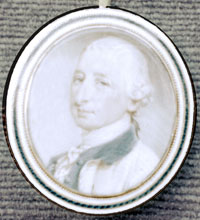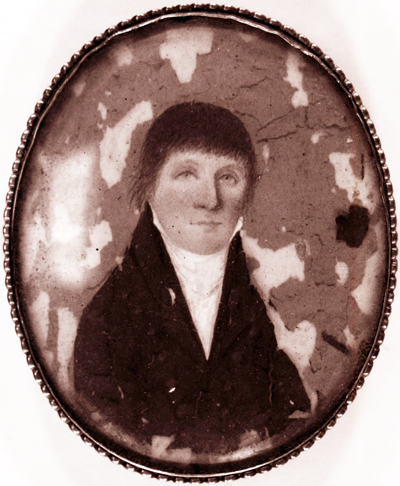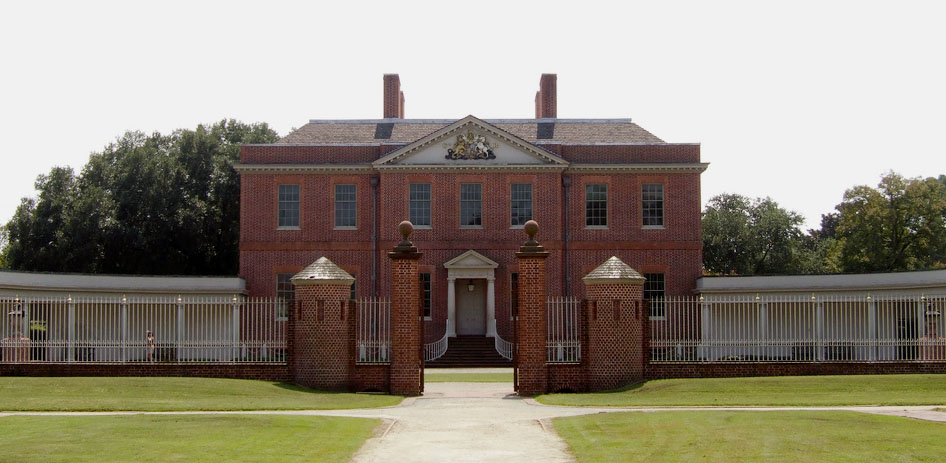Royal Governor Josiah Martin is a mostly forgotten character in North Carolina colonial history. Martin was less flamboyant than his predecessor, William Tryon, and only served as governor for four years. But Martin played an important role in the formation of the new state of North Carolina: his getaway from the colonial capital in New Bern left a leadership opportunity that was filled by revolutionary leaders.
The relationship between many colonists and the colonial government deteriorated during the early 1770s. Colonists in North Carolina were upset by high taxes and outrages committed against colonists in Massachusetts. They responded by organizing and corresponding with people in other colonies. These efforts resulted in an extra-legal group, the Provincial Congress. Colonists also organized militias and collected weapons. These acts greatly troubled colonial officials. One seizure of gunpowder led to the battles of Lexington and Concord in Massachusetts, the first battles of the American Revolution.
After the battles of Lexington and Concord, opponents of royal authority (or the Crown), known as Patriots, sprang into action across the colonies. Many groups marched to colonial capitals and protested against colonial governmental leaders. In North Carolina, the colonial leader was Royal Governor Josiah Martin. In May 1775, after several other colonial governors had already been deposed, protesters surrounded the royal palace at New Bern. Governor Martin feared that he would be in danger if the mob broke through the palace gates. Martin also angered the local populace by dismantling the palace's ceremonial cannon. On May 31, 1775, the governor fled the capital at night.
Martin fled to Fort Johnston, a strategic fort that he had previously made additions to near the mouth of the Cape Fear River. But the southern Cape Fear River area was still a hotbed of Patriot discontent. One Patriot stronghold was nearby Wilmington which was home to Patriot leaders like Cornelius Harnett Jr. and William Hooper. Martin arrived at Fort Johnston on June 2, 1775. He quickly realized that the fort offered little protection. By June 25, more than half of the 25 troops stationed at Fort Johnston to protect Governor Martin had deserted, and there was not enough gun powder to protect the fort or the weapons there.
On July 13, 1775, without enough ammunition or manpower to fight off a Patriot attack, Martin abandoned Fort Johnston. He took all of the fort's valuable weapons with him aboard the Cruzier, the British war ship that had been protecting Martin and the fort. From the Cruzier, Martin continued to communicate with British political and military leaders. Fort Johnston was burned early in the morning on July 19, 1775. Governor Martin and the Cruzier's crew watched from aboard the ship. Martin left the mainland for the safety of a British ship. From this ship, he recruited Loyalists to take back the colony for the Crown. As Janet Schaw, a Loyalist who kept a diary of the period, explained, "Some Scotch Gentlemen had come down from the back settlements with offers to the Govr of raising a considerable number of men, provided the Govr could obtain for their use, arms and ammunition…" This plan ended with the Patriot victory at Moore's Creek Bridge in early 1776. Technically, Martin remained governor for the entire time he was off the coast. His proclamations had no force, however, and most of them did not even reach the people of North Carolina. He finally returned to his former home of New York in 1776 and went to England several years later, where he died in 1786.
Josiah Martin's flight was a foundational moment for the state of North Carolina. Martin was the last representative of royal authority. Without him, North Carolina had to govern itself. It did so by forming a constitution and institutions of government. Richard Caswell, a Patriot leader and member of the Provincial Congress, became the first state governor in 1776. The new government created a university and established rights for North Carolinians. While imperfect in many ways, this constitution was the culmination of a process of self-governance that began the moment Josiah Martin fled his royal home.
References:
Powell, William S. "Governor Martin Flees New Bern." in Chronology of the American Revolution. Raleigh, North Carolina. Division of Archives and History, Bicentennial Section, 1975.
Ready, Milton. The Tar Heel State: A New History of North Carolina. Columbia, South Carolina: University of South Carolina Press, 2020.
Robinson, Blackwell P. The Five Royal Governors of North Carolina, 1729-1775. Raleigh, North Carolina: Carolina Charter Tercentenary Commission, 1963.
Schaw, Janet. Journal of a Lady of Quality; Being the Narrative of a Journey from Scotland to the West Indies, North Carolina, and Portugal, in the years 1774 to 1776. New Haven, Connecticut: Yale University Press. 1921. Retrieved from https://docsouth.unc.edu/nc/schaw/schaw.html.
Stumpf, Vernon O. Josiah Martin: The Last Royal Governor of North Carolina. Durham, North Carolina: Carolina Academic Press for the Kellenberger Historical Foundation. 1986.



